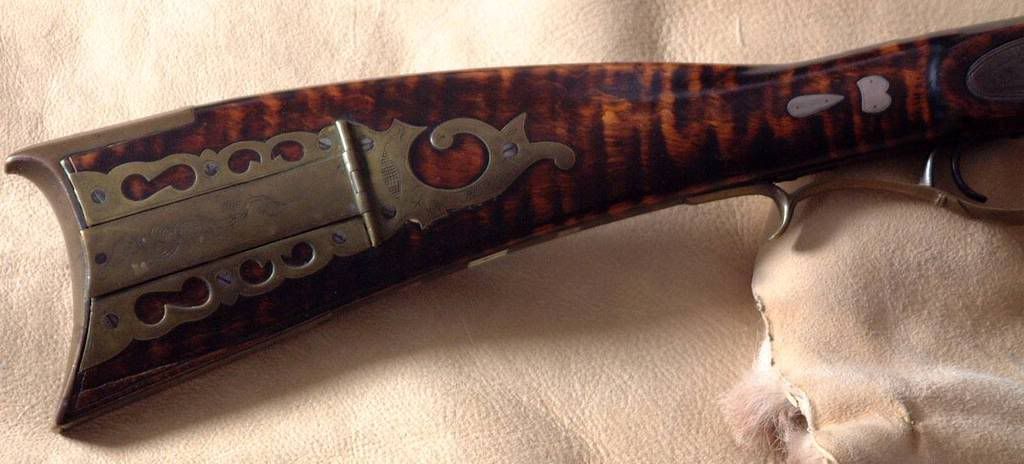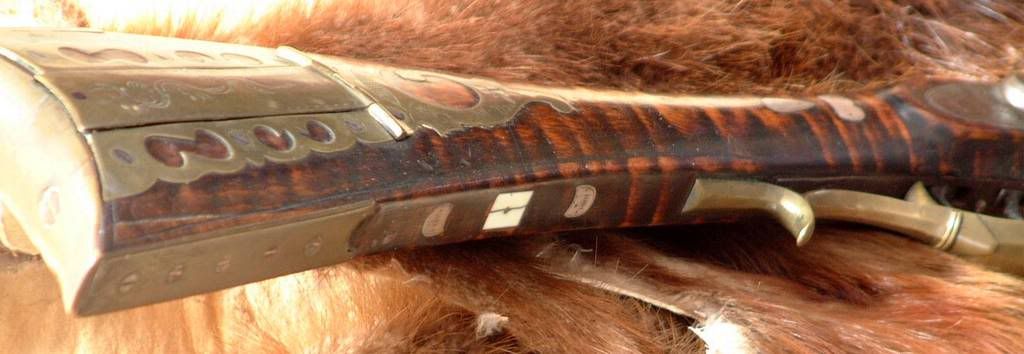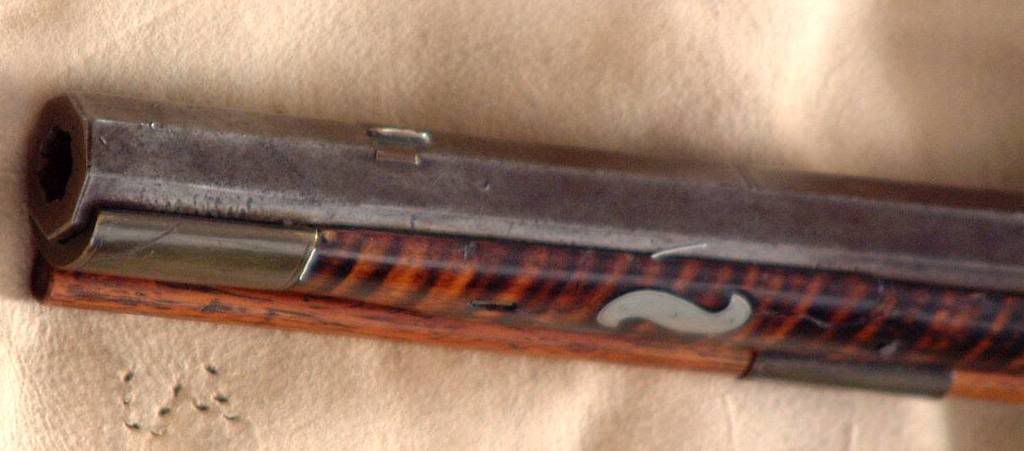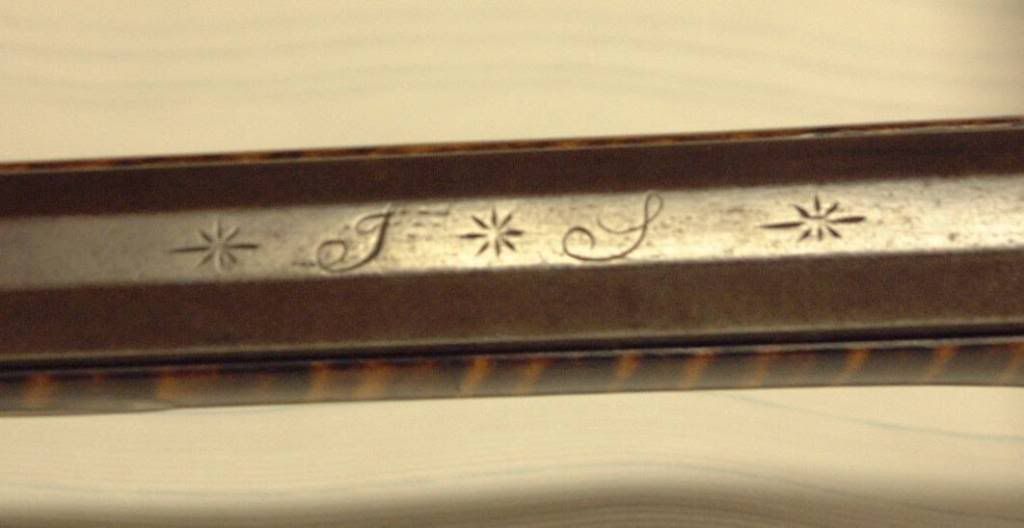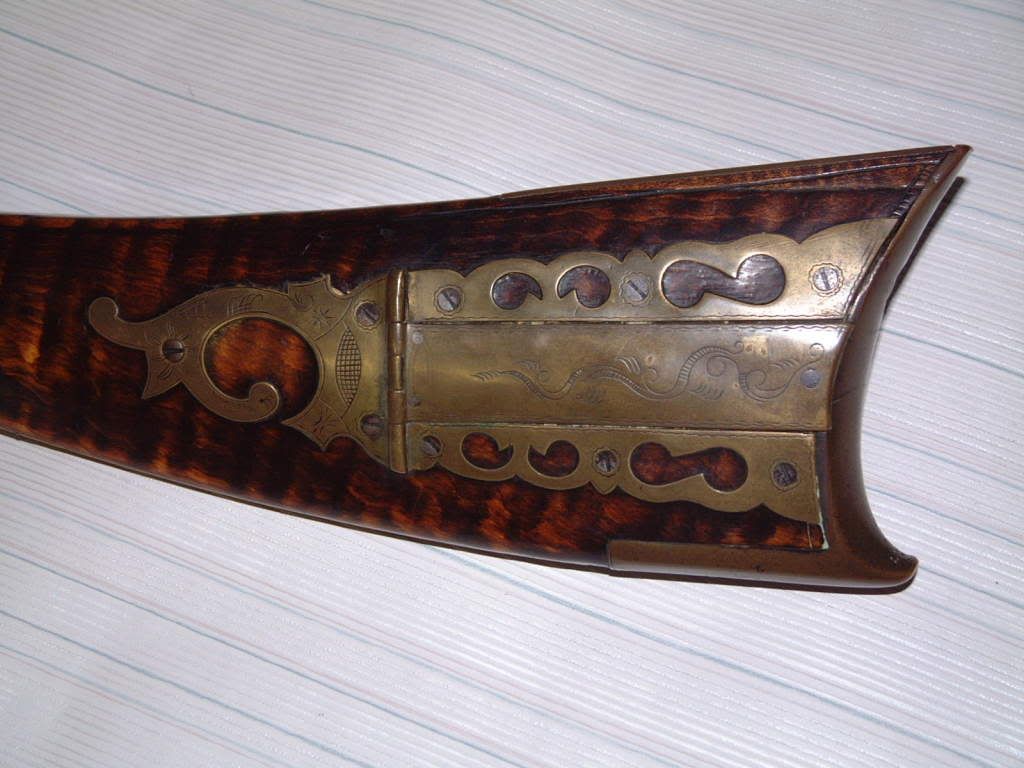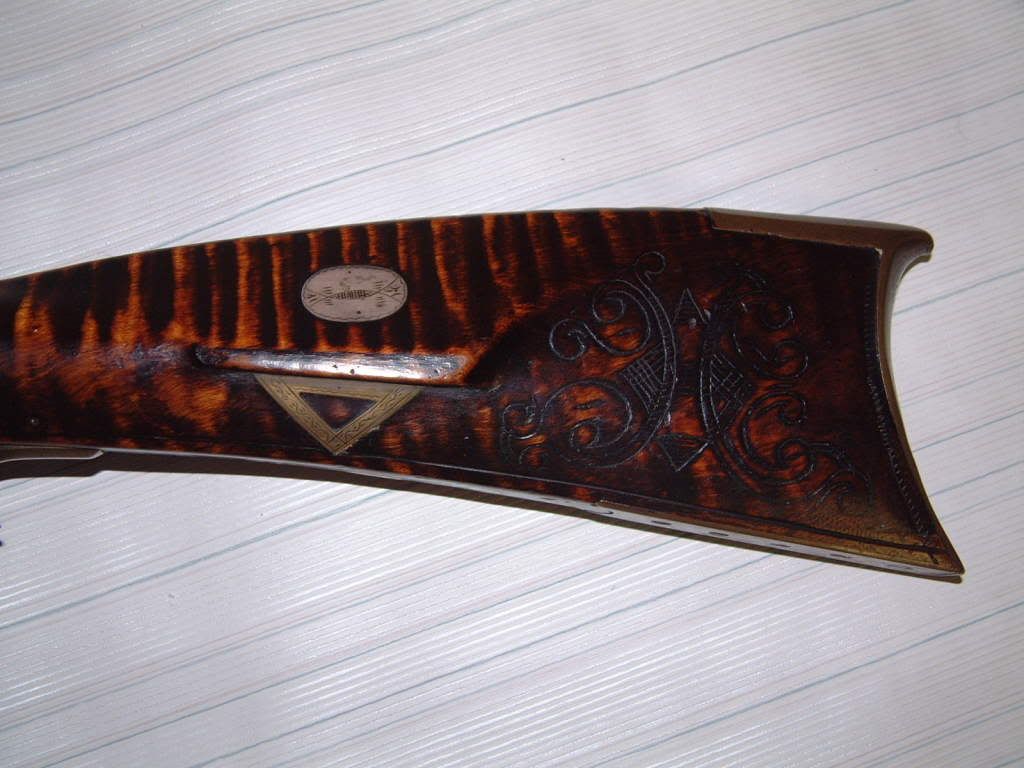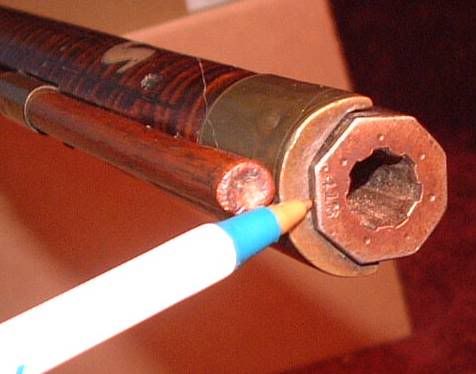Note:
02/10/09 - Review of data turned up at Lewisburg, PA would indicate that this particular rifle long thought to be made by Joe Long was actually made by Joeseph Schaefer. Physical characteristics of rifles by both makers are strikingly similar in many details. The antique script originally thought to be J.L. is actually J.S. (Joseph Schaefer). Please refer to Joseph Schaefer for further information.
The Schaefer rifle will remain here under Joe Long for educational purposes. A wonderful example of honest misidentification caused by strikingly similar construction styles, antique script, and the all too human condition of coming to a conclusion without the necessary information at hand. (We thank Jeff Spotz in particular for finally giving Joseph Schaefer the credit he so richly deserves.)
- Admin
=====================================================
Discussion Highlights:
The rifle currently identified as a "Joseph Long" might be misattributed, and probably should be reviewed. Discrepancies seen in this rifle that are not usually found in Joseph Long's work include the following:
1. Barrel initials - These initials are very different from known Joseph Long initials. Joseph always clearly crossed over the foot of his "L" which this gun lacks. I believe the second initials is an "S." Also note the 8-pointed stars between the initials on this gun, never seen on any other signed Jospeh Long rifle. Long used a small dot or period after his "J" not seen here.
2. Patchbox - The finial is in the general style of Joseph Long's work, but has major differences. Long's work is much thinner and more delicate, and if put along side this finial, is substantially different. On this style finial, Long always had flat, parallel sides for a short distance up from the hinge, in the base screw area, before curving inward for the first scroll. This finial has no flat areas, rather curving in immediately. Note hinge construction. Both this rifle and Long used a 3 segment hinge, but this rifle has its segments equal in width to the lid width. Long almost always made his 3 segment hinge slightly small than the lid width, so hinge lines do not line up with lid edges. Also note the side leaves are totally foreign to Long's known work.
3. Engraving - Long was very limited in engraving, and I have not seen a Joseph Long with a major engraved pattern on the box lid, such as this gun has.
4. Inlays - All inlays on this rifle are very different from those known to be used by Long. Long was consistent in his inlay use. Note the wear plate on the bottom of the forestock grip area. It appears original to the rifle, yet is totally foreign to Long's work. Long used a consistent pattern of grip inlay, non-pierced, with 3 pointed finials at either end.
5. Butt carving - The incised carving is different from that used by Long. Long generally used asymmetrical foliage that gracefully flowed to the right, off the right edge of the cheekpiece. This rifle has symmetrical engraving, almost baroque style engraving centered in the but, not flowing off the cheek curve.
6. Stock shaping - This also has several major differences from Long's known work. a) Note where the wrist meets the comb. Long always had a clean separation here between wrist and comb in this area, a sharp line of separation for perhaps the first 2 inches back from the end/nose of the comb. This rifle's butt has no such clean separation of wrist and comb in this area. b) Note side facings. Long always used extended, graceful sidefacings that were slightly longer than many others. He left substantial wood behind the lock plate, perhaps an inch, and also in front of the lock plate, although perhaps slightly less here. But the attributed rifle has much shorter, "chunky" side facings. They are not as graceful as on Long rifles, and their edges much closer to the lock plate.
7. Triggers - On most of Long 's rifles, the front or hair trigger had a graceful curl at its base. It is lacking on this rifle.
8. Perhaps I simply cannot see it in the photos, but I don't see the Long style box release button in the butt plate near the end of the lid.
I think the posted rifle is made in the general style of a Joseph Long rifle, but the barrel initials appear not to be "J. L." but rather "J. S." and their general style of engraving also differs significantly from Long's work. That, when coupled with all the small, and not so small, variations from known Joseph Long rifles, makes me think we might want to take another look at the attribution of this rifle. It's a good looking rifle, but I'm not sure it's a Joseph Long product.
Addendum 01/01/09
I concur with the misidentification suggestion. The rifle pictured as a "Long" is most likely not a product of Joseph Long, especially considering that the infamous and almost always-present football shaped sideplate is missing. A brief look in Seller's American Gunsmiths reveals the possibility that this gun is a product of Dauphin County, particularly John Shell (if this is a "JS" signature), but I would not rule this out as an early Ohio rifle. It could also be signed "TS." Feel free to disagree, but it does not look like a classic Union/Snyder County rifle.
Where did Long live and work? Cooper's Kentucky Rifle and Me contains the basic details about Joe Long. He was born in Penn Township, Northumberland County, Pennsylvania on September 18, 1799. At the time of his birth, present day Union and Snyder Counties were part of then Northumberland County. Long family genealogy reveals that Long was most likely born in present day Snyder County (which between 1813 and 1855 would have been part of Union County). Long's birthplace is located south of the town of New Berlin, Union County, Pennsylvania. Cooper points out that around 1819, Long's family moved to White Deer Township, Union County, Pennsylvania. White Deer is located west of present day Milton, Northumberland County, Pennsylvania. At the time of his family's move, it would appear that Long was likely completing his apprenticeship.
Who was Long's teacher and who were his business associates? Several early references claim that Joe Long worked with Samuel Morrison in Milton, Northumberland County, Pennsylvania and possibly apprenticed under William Fillman, a gunsmith located in Milton, Northumberland County, Pennsylvania. This is still possible as the Long and Morrison sideplates (and other features) are nearly identical. Rather than working together as apprentices, I tend to believe (and perhaps incorrectly) that Long and Morrison worked together at one point. Early references mention the fact that there are rifles signed "Long and Morrison." I have never seen a rifle with both names, but it is quite possible that Long and Morrison worked together at one point. Based on Long's proximity to New Berlin, Union County, Pennsylvania, I believe that Long and Morrison may have both apprenticed in New Berlin under Samuel Baum, Sr. Samuel Baum, Jr. would have been apprenticing at the same time and based on recent theories, Samuel Baum, Sr. operated a gun factory in New Berlin and this area would have served as a perfect place to learn the trade, in light of the concentration of gunsmiths in this small town, which served as the county seat of Union County between 1813 and 1855 and was an industrial hub of early cottage industry production. We may never know the exact details on Long's apprenticeship, but we do know that as early as 1826, Long was listed as a gunsmith in Adamsburg (now Beaver Springs, Snyder County, Pennsylvania). Long later moved northwest of Beaver Springs, Snyder County, Pennsylvania (as recorded in the 1832 tax assessment). He continued his career in this location, in close proximity to the Specht family of gunsmiths, who worked in Beavertown, Snyder County, Pennsylvania.
What else do we know? Long held several public offices in Snyder County, including Justice of the Peace. Many early deeds from Snyder County, Pennsylvania, include Long's signature (identically matching the signature on his rifles) as a witness. He was actively involved in the community and church. At least two sons learned the gunsmith trade, but were not nearly as successful as their father. One son Jesse, signed his rifles "JL" like his father but they are not nearly as graceful as his father's product. A Joe Long rifle that "does not quite look right" may be a Jesse Long and caution should be exercised in identifying the gun as a Joe Long. Other family members practiced the trade, including William Long (perhaps a brother), as well as George Long (a nephew). Long died May 8, 1872.
=====================================================
Joseph Schaefer - .41 Cal Rifled. 56" Total Length - 42.5" Barrel. Very delicate woodwork, slight swamp at muzzle. Initials "J.L." (Now corrected to J.S.)
